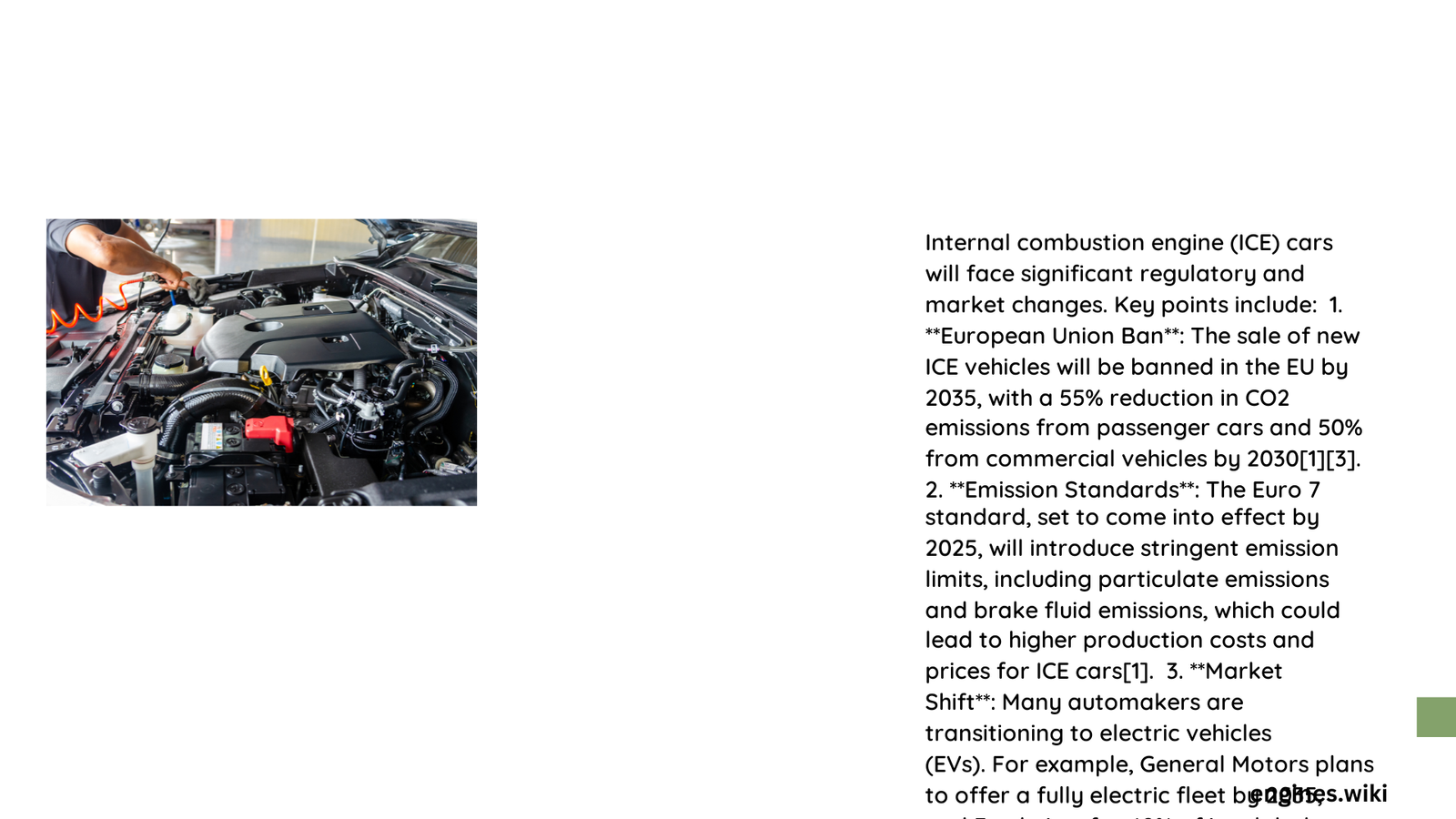The Inevitable Transformation of Internal Combustion Engine Cars
Summary Overview
The automotive landscape is undergoing a radical transformation as internal combustion engine (ICE) cars face unprecedented challenges. Stringent global regulations, environmental concerns, and technological advancements are rapidly accelerating the shift towards electric vehicles. By 2035, multiple countries and states will implement comprehensive bans and restrictions on new gas-powered vehicle sales, signaling the beginning of the end for traditional combustion engine technology.
What Regulatory Changes Will Impact ICE Vehicles?
United States Emissions Standards
The U.S. Environmental Protection Agency (EPA) has introduced groundbreaking regulations that will fundamentally reshape the automotive market:
- Emission Reduction Targets
- 50% reduction in greenhouse gas emissions by 2032
-
Stricter limits on hydrocarbons, nitrogen oxides, and particulate matter
-
Sales Projection Requirements
| Vehicle Type | Projected Sales by 2032 |
|————-|————————-|
| Electric Vehicles | 56% |
| Plug-in Hybrids | 13% |
| Traditional ICE Vehicles | 31% |
State-Level Restrictions
At least 12 states have adopted California’s Advanced Clean Cars II (ACCII) rule, which mandates:
- Incremental zero-emission vehicle sales from 2026
- Complete ban on new gas-powered car sales by 2035
- Potential penalties for non-compliance
Will Internal Combustion Engine Cars Become Obsolete?
While complete obsolescence isn’t immediate, significant challenges await ICE vehicle owners:
- Maintenance Costs: Rising exponentially
- Resale Value: Expected to decline dramatically
- Operational Expenses: Increasing regulatory compliance costs
How Will the Market Respond?
Major automotive manufacturers are already pivoting:
- General Motors: Cease gas car production by 2035
- Stellantis: 50% electric vehicle sales by 2030
- Ford: Accelerating electric vehicle development
Environmental Impact Considerations
Projected Carbon Dioxide Reductions:
– 7.2 billion metric tons over regulatory program lifecycle
– Significant reduction in urban air pollution
– Decreased dependency on fossil fuels
Consumer Transition Strategies
- Consider hybrid vehicles as transitional technology
- Evaluate total ownership costs of electric alternatives
- Stay informed about local and federal incentives
- Plan for potential vehicle replacement within next decade
Technical Challenges in EV Adoption
- Battery technology improvements
- Charging infrastructure expansion
- Grid electricity generation sustainability
- Raw material sourcing for electric vehicles
Economic Implications
Potential Industry Shifts:
– Automotive manufacturing restructuring
– Job market transformation
– New skill requirements for technicians
– Emerging electric vehicle supply chain
Conclusion
The future of internal combustion engine cars is not extinction, but gradual transformation. While gas-powered vehicles won’t disappear overnight, they will become increasingly specialized, expensive, and limited in their market presence.

